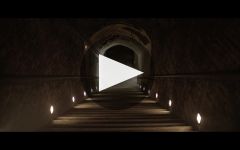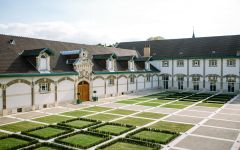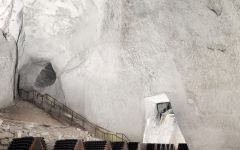Ruinart Dom Ruinart Brut Rose 2002
-
Robert
Parker -
Wine
Spectator -
James
Suckling -
Wine &
Spirits -
Wine
Enthusiast



Product Details
Your Rating
Somm Note
Winemaker Notes
Professional Ratings
-
Robert Parker's Wine Advocate
Disgorged in June 2014 with 5.5 grams per liter dosage, the 2002 Dom Ruinart Rosé includes 20% red Pinot Noir from Sillery and Verzenay. Unfurling in the glass with aromas of brioche, mirabelle plum, dried orange rind and fresh pastry, it's full-bodied, broad and gourmand, with a creamy mousse, delicate phenolic grip and excellent balance. This is one of the finest renditions of this cuvée that I've tasted.
-
Wine Spectator
This is subtle up front, with delicate aromas and flavors of pink grapefruit granita, pickled ginger, spun honey and biscuit. The smoky underpinning of minerality gains momentum, riding the lacy mousse to a fresh and persistent finish. Drink now through 2027. 92 cases imported.
-
James Suckling
With a true "eye of partridge" nose, this has the boldness of the 2002 vintage and is unique in that the wine is based on 80% chardonnay as a top rosé Champagne. The aromas are floral with sweet decayed rose hip and a clear toasty edge showing through, as well as fine wild red fruits and some peach and stone fruits. There's a completely unique style here in terms of the chardonnay making a statement of gentle nougat, while some dried red berries lurk beneath. The palate has precise, sleeve-like long texture and is really focused and even. The freshness is startling, meanwhile, and this really looks very young and unevolved. There's some very gentle tannin in the mix here, adding nutty toasted hazelnut elements on the finish. Acidity is pronounced and, having the last say, keeps everything really fresh. Drink now.
-
Wine & Spirits
It’s rare to find a 2002 as compellingly drinkable as this rosé. It’s floral and intensely fruity, the flavor lasting for minutes, supported by limestone acidity as if by the arches of the chalk caves in which this rested for the past dozen years. The dosage is generous, which may be one reason this feels ready to drink, its gripping richness and refinement making it a match for roast squab or other game birds.
-
Wine Enthusiast
From a great Champagne vintage, this rich, full-bodied wine is just beginning to develop secondary flavors, toast and walnuts. The red fruits are fading into the background, while keeping the acidity in place. It is ripe, well balanced and has a delicious, long aftertaste. It is ready to drink.
Other Vintages
2007- Decanter
-
Wine
Spectator -
James
Suckling -
Wine
Enthusiast -
Wine &
Spirits






Ruinart Blanc de Blancs is the emblem of the House, and it is the perfect expression of the Ruinart taste. It is comprised of 100% Chardonnay grapes grown primarily with Premiers Crus from the Côte de Blancs and Montagne de Reims terroirs, both prized for their aromatic finesse.

What are the different types of sparkling rosé wine?
Rosé sparkling wines like Champagne, Prosecco, Cava, and others make a fun and festive alternative to regular bubbles—but don’t snub these as not as important as their clear counterparts. Rosé Champagnes (i.e., those coming from the Champagne region of France) are made in the same basic way as regular Champagne, from the same grapes and the same region. Most other regions where sparkling wine is produced, and where red grape varieties also grow, also make a rosé version.
How is sparkling rosé wine made?
There are two main methods to make rosé sparkling wine. Typically, either white wine is blended with red wine to make a rosé base wine, or only red grapes are used but spend a short period of time on their skins (maceration) to make rosé colored juice before pressing and fermentation. In either case the base wine goes through a second fermentation (the one that makes the bubbles) through any of the various sparkling wine making methods.
What gives rosé Champagne and sparkling wine their color and bubbles?
The bubbles in sparkling wine are formed when the base wine undergoes a secondary fermentation, which traps carbon dioxide inside the bottle or fermentation vessel. During this stage, the yeast cells can absorb some of the wine’s color but for the most part, the pink hue remains.
How do you serve rosé sparkling wine?
Treat rosé sparkling wine as you would treat any Champagne, Prosecco, Cava, and other sparkling wine of comparable quality. For storing in any long-term sense, these should be kept at cellar temperature, about 55F. For serving, cool to about 40F to 50F. As for drinking, the best glasses have a stem and a flute or tulip shape to allow the bead (bubbles) and beautiful rosé hue to show.
How long do rosé Champagne and sparkling wine last?
Most rosé versions of Prosecco, Champagne, Cava or others around the “$20 and under” price point are intended for early consumption. Those made using the traditional method with extended cellar time before release (e.g., Champagne or Crémant) can typically improve with age. If you are unsure, definitely consult a wine professional for guidance.

Associated with luxury, celebration, and romance, the region, Champagne, is home to the world’s most prized sparkling wine. In order to bear the label, ‘Champagne’, a sparkling wine must originate from this northeastern region of France—called Champagne—and adhere to strict quality standards. Made up of the three towns Reims, Épernay, and Aÿ, it was here that the traditional method of sparkling wine production was both invented and perfected, birthing a winemaking technique as well as a flavor profile that is now emulated worldwide.
Well-drained, limestone and chalky soil defines much of the region, which lend a mineral component to its wines. Champagne’s cold, continental climate promotes ample acidity in its grapes but weather differences from year to year can create significant variation between vintages. While vintage Champagnes are produced in exceptional years, non-vintage cuvées are produced annually from a blend of several years in order to produce Champagnes that maintain a consistent house style.
With nearly negligible exceptions, . These can be blended together or bottled as individual varietal Champagnes, depending on the final style of wine desired. Chardonnay, the only white variety, contributes freshness, elegance, lively acidity and notes of citrus, orchard fruit and white flowers. Pinot Noir and its relative Pinot Meunier, provide the backbone to many blends, adding structure, body and supple red fruit flavors. Wines with a large proportion of Pinot Meunier will be ready to drink earlier, while Pinot Noir contributes to longevity. Whether it is white or rosé, most Champagne is made from a blend of red and white grapes—and uniquely, rosé is often produce by blending together red and white wine. A Champagne made exclusively from Chardonnay will be labeled as ‘blanc de blancs,’ while ones comprised of only red grapes are called ‘blanc de noirs.’
